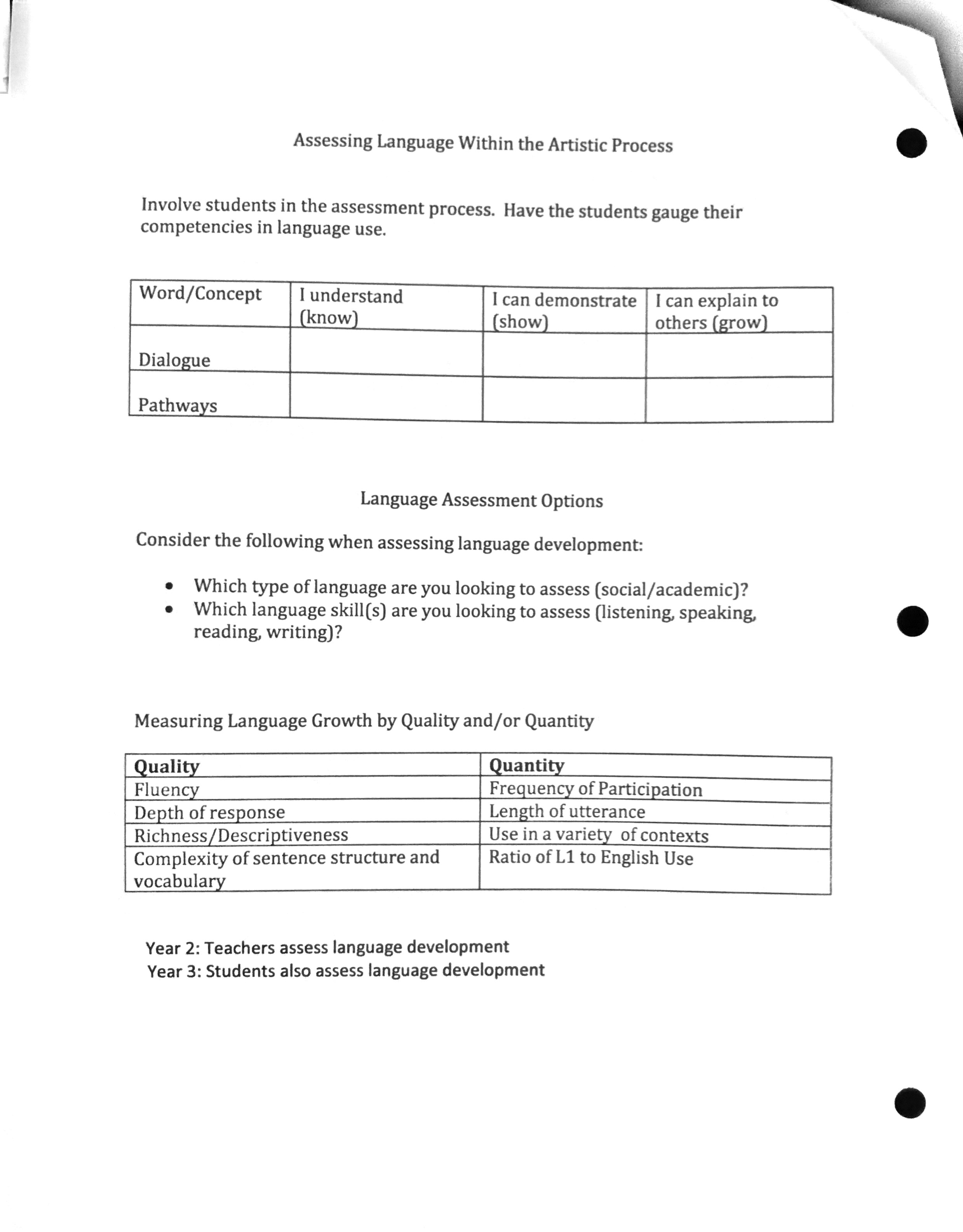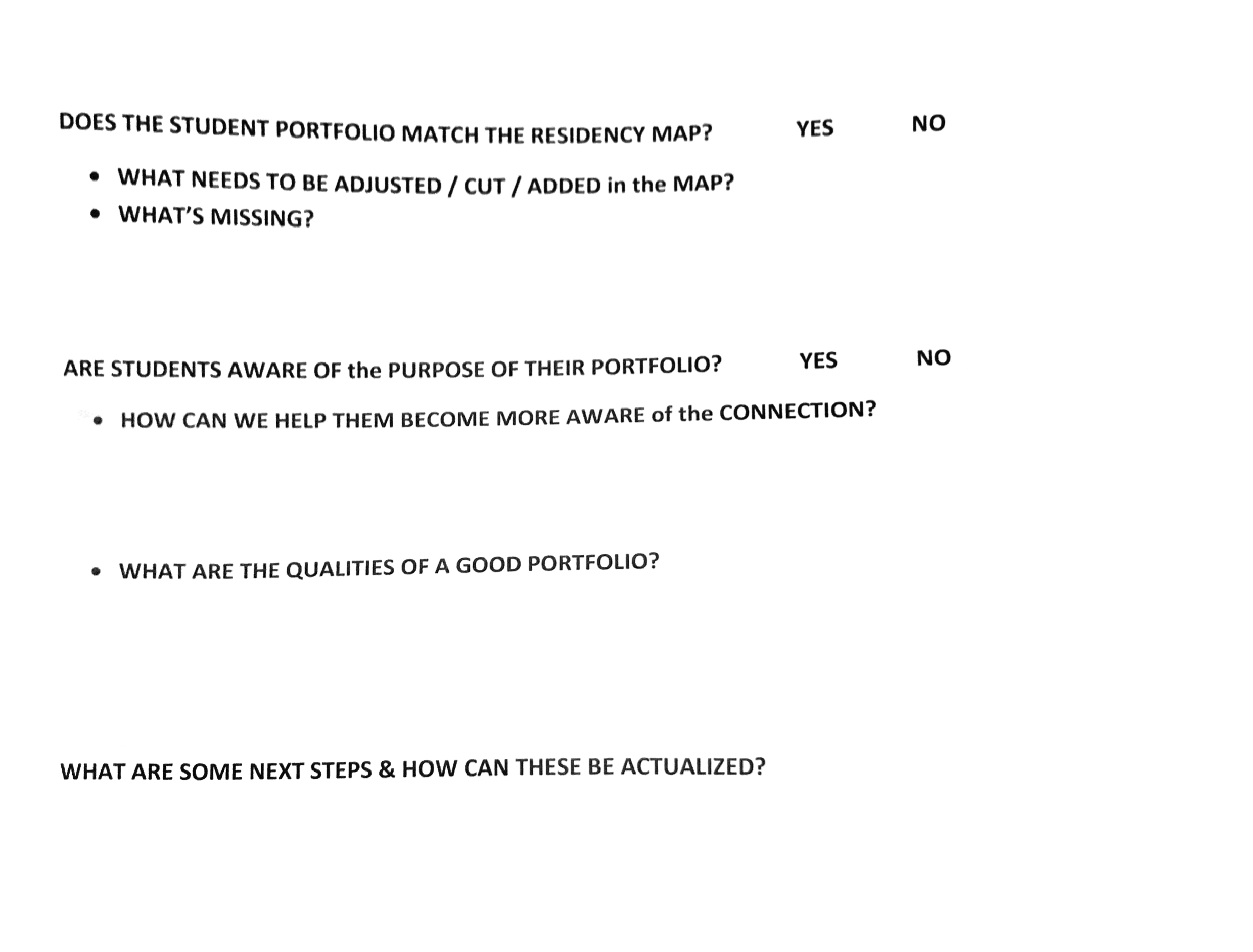Designing Digital DELLTA
Abstract
Experience: Digital & Tangible
Type: Curriculum Product & Content Strategy (LMS) - ArtsConnection
Objective: To evolve ArtsConnection’s decade long program DELLTA. The goal is to engage middle school EL students in learning to work and think like artists in dance and theater, and document their process through digital media portfolios.
DELLTA (Developing English Language Literacy through the Arts)
US ED grant funded Arts Education program for Middle School ELLs and ESL teachers.
ArtsConnection’s Digital DELLTA (Developing English Language Literacy through the Arts) is a US ED grant funded Arts Education program for Middle School ELLs and ESL teachers. It blends arts, language and technology learning to provide collaborative opportunities that support second language acquisition.
Project Brief
Evolving DELLTA
The DELLTA project (Developing English Language Literacy through the Arts) began in 2005 through a grant from the US Department of Education (US ED) and grew out of earlier inquiries. Our inquiry question was, What is the nature of teaching and learning in dance and theater; and in what ways do they influence second language acquisition (SLA) in Emergent Bilinguals (EBs)?
Student achievement in DELLTA was strongest in seven variables: motivation; perseverance/task persistence; ability to focus; ownership of learning; spatial awareness; self- confidence; collaborative learning skills.
Middle school EL students that previously participated in DELLTA in either dance and theater - 66% improved ELA scores vs. a comparison group (scores above 50% indicate superior student progress when compared to the matched group); 78% demonstrated knowledge and skills in dance and theater; 73% showed growth in English, expressivity, focus and elaboration; and, 70% improved their problem-solving strategies and capacity for sustained effort (including ownership of learning process, self- confidence, cooperative learning and motivation), as measured by teacher assessments.
What is Digital DELLTA?
Digital DELLTA builds on a decade of federally funded ArtsConnection programs that support language acquisition and learning through dance and theater residencies.
The goal is to engage middle school EL students in learning to work and think like artists in dance and theater, and document their process through digital media portfolios, in order to support improved acquisition of contextualized academic, socio- linguistic, strategic and discourse levels of language needed to be college and career ready. By the end of the Digital DELLTA program ArtsConnection will have a curriculum product and learning management system to easily implement a program that blends hands-on arts, language and technology learning experiences.
Problem Statement
How might we help English Language Learners develop language skills in a natural way through the arts & technology to support their academic success?
Building a Solution, a Curriculum Product
Why the Arts?
Learning in the arts is: 1. Inquiry-based 2. Experiential and kinesthetic 3. Lowers the affective filter 4. Provides opportunities for authentic use of English
Who is it for?
ELLs Students:
- Participate in dance & theater residencies
- Engage in collaborative discussions and formative assessment practices in small groups to achieve the CCSS ELA Speaking and Listening standards
- Learn to use digital documentation to reflect on, assess and share their learning process in dance and theater
- Create digital portfolios and presentations aligned with CCSS ELA Speaking and Listening 1

ELLs & ELA teachers:
- Collaborate with teaching artists to integrate formative assessment strategies into arts residencies
- Support student’s ability to articulate and document their learning in the arts through the creation of multimedia digital portfolios and presentations
- Learn how to use digital documentation and media to support student learning in both the arts and language
- Participate in an Educator ePortfolio process - where the Educator ePortfolio will serve as an artifact of ongoing professional learning and provide documentation to address the CTLE requirements.
How many years, schools, teachers, students will be part of the program?
- 4 year program
- 4 full day professional development workshops per year
- 6 on-site meetings per year
- 4 schools served, Queens, NYC
- 5 classes of middle school ELLs and
- 5+ ESL/ELA teachers per school
- 110+ students per school
Timeline

Learning Management System & My Roles
My Role & Developing Learning Management System
Acted as: Product Designer / Program Manager / Researcher / Videographer
Developed experimental curriculum, Digital DELLTA (multi year program), integrating arts learning with technology use and learning to help promote individualized learning in small group work. This curriculum had multiple points of reflection to assess learning of students, teachers and other stakeholders. Each type of user (student, teacher, teaching artist, employee) had a different learning path which required us to iterate on the Learning Management System (LMS) each year based on feedback and data gathered throughout the school year. Our goal was to create a LMS both digitally and analog as a product to sell to schools to be used to increase English Language Learners scores.
Our Users - Needs & Tools Created to Serve
Students: Created digital portfolios for students to gather their arts learning through video, photo, and audio captured using iPads. In each section of the portfolio students utilized checklists to keep track of their materials and process, answered questions to help reflect on their work, and filled out self assessments to track their own learning.
Teachers: Developed Professional Workshop days and meetings that followed sequential learning. Teachers would learn about arts teaching methodologies, best practices to teach English Language Learners, tips and tricks using technology in their classroom, and a chance to collaborate with teaching artists combine these to provide a rich curriculum. Meetings scheduled sometime after a workshop day would be a point of group reflection to assess how the curriculum was going for their students, modification needed, and goal setting together for students or themselves.
Teaching Artists: Provided with their own Professional Development days, separate from the one with Teachers, to - 1. train in using iPads (hardware and software), 2. guidance and mentorship in teaching technology alongside their artform, 3. guidance and mentorship in developing curriculum that integrated arts and technology, and 4. iterate on curriculum year over year to increase student engagement and learning objectives met for students.
Employees: On-boarded new employees to the program through training of - 1. iPad best practices and troubleshooting, 2. using assessment methods of observation and direct feedback with teaching artists, and 3. provide one on one mentorship to help development curriculum.
Learning Design
What types of learning?
We worked with ArtsConnection’s teaching artists to integrate and blend arts, language and technology learning for ELL students. From ArtsConnection’s on professional development for artists we had some best practices in place for artistic learning so we had to layer in language and technology learning, but first we had to understand ELL students better.

Understanding English Language Learners (ELLs)
Misconceptions:
- majority of ELLs are new arrivals to the country
- academically deficient
- cognitively deficient
- if immersed in English they will eventually “pick-it-up”
Realities:
- many ELLs are actually born here yet they are first entering a English Language setting when they reach school age
- in the borough of Queens over 100 different languages representing 80 countries are spoken - one of the most diverse places in the US
- if ELL attended school in their country they are not further behind in academics necessarily, their content knowledge may be well above their native speaking counterparts
- Language Proficiency is not an accurate indicator of cognitive ability
- “sink or swim” method of language development is not sufficient for Language Learners to acquire the needed academic language and skills for a demanding education system

Academic Language is not anyone’s ’Native Language’
Academic Language is made up of grammar, vocabulary development and specific language structures needed to process and produce higher order thinking.
Learning Processes
Our basic process for arts learning is: Knowing -> Doing -> Reflecting/Assessing
The key was how to layer in language learning and how technology could be a tool to support both art and language learning.



Both Teachers and Teaching Artists could understand and assess the success of this model by using the Depth of Knowledge (DOK) and an observation protocol. This was a successful to align Teachers and Teaching Artists under a common language of their own.

Technology Choice
We chose iPads as a our technology hardware and Explain Everything as our software. In order to educate Teachers, Teaching Artists and students on best practices for iPad use/maintenance, video/image capture and presentation creation, we designed a hands-on tutorial that utilized the iPads and app Explain Everything. We later changed to Keynote based on issues updating the iPads OS and Explain Everything app - we originally hoped EE would work because it also incorporates the option to capture audio separately.


Learning Approaches
Language Experience Approach
Goal: Generate authentic meaningful texts from students’ discussions.
- First the students participate in a group experience, such as a trip, read aloud, experiment or art process.
- Then you discuss this experience as a class - record important vocabulary or concepts on the board during the discussion.
- Finally, the students construct a text based off the experience and discussion. This allows the students use their own vocabulary, language patterns and prior knowledge to capture the essence of the experience.
- Later the students can easily read back the text since it was self generated. This helps language learners move from oral language to literacy development in a natural way.
Bloom’s Taxonomy of Language Acquisition
Used to help differentiate questioning (orally and written).


Deficit Ideology Avoidance (adapted from Dr. Robert Pianta’s 7 Ways Teachers Can Change Their Expectations)
- Collaborate with Learners
- Critique Your Approach/Language
- Complicate the Narrative, not just binary
- Listen without Judgement
- Change how you read to challenging behaviors
- Reflect on your assumptions
- Reflect on best and worst teachers/bosses/supervisors
Ladder of Feedback
We also implemented ArtsConnection’s use of the Ladder of Feedback in various places in order to enable all voices to be heard. This was used during the residency in the school by teaching artists with students, in professional development with teachers and amongst staff in developing the program.

The Digital Portfolio
What is the portfolio?
Collaborative small group work that is project based learning in order to teach students to skills and content in the arts and language. Scaffolded learning that leads to the creation of a portfolio artifact that shows and explains students’ learning in their own words. It utilizes the Knowing -> Doing -> Reflecting/Assessing process. The portfolio is organized by type of task and learning not by subject matter.
How We Iterated
UX Methods
We implemented User Experience Methods like Contextual Inquiry (Field Studies), Naturalistic Observations, Participatory Observations and Expert Review in order to gather significant research insights and data to improve upon the curriculum product.
Program Assessment Examples
These observations of students in the program aimed at understanding their arts, language and technology learning.
Using an observation protocol similar to the one we use as Program Managers to assess teaching artists, we noted arts learning.

We produced a Language Observation Tool to gather language learning insights.


We also introduced a portfolio assessment worksheet for Teachers and Teaching Artists to use to better understand students’ learning and use of the digital technology to create their portfolio.


Iterative Portfolio Design
1. Freeform structure produced by students.
2. Template, synthesized from student freeform, teaching artist curriculum, teacher goals and observational data.
3. Template Edited with teachers, teaching artists and program manager based on observational data.
4. Template finalized and implemented. Teachers also produce their own portfolio based on arts learning and observations of students.
Next Steps
Digital DELLTA continues in Queens schools served and was renewed for another 3 years to work in 5 schools in Brooklyn.
New Implementations:
- Video series for professional development on ELLs language acquisition with our language expert Jennifer Stengel-Mohr.



